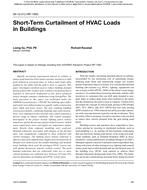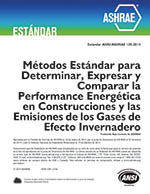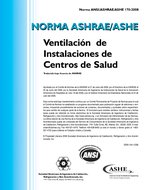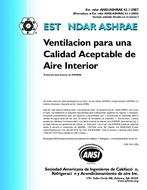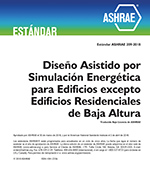Description
Rapidly increasing requirements placed on utilities toreduce peak loads has led to utility customer incentives to shiftpeak demand to non-peak times or reduce peak loads whennotified by the utility that the grid is close to capacity. Thispaper investigates methods used to reduce building demandduring a fixed time window near a utilities on-peak period inresponse to short-term notification (a few hours advancednotice) through computer simulations using EnergyPlus. Thework presented in this paper was performed under theASHRAE research project, 1390-RP. Two building types (officeand retail) were defined using two equally viable constructiontypes (light and heavy mass). The four resulting buildingconstruction models, combining building types and constructions,were simulated in five selected cities which represent adiverse range of climate conditions. The control strategiesinvestigated in the project include lighting power densityreductions, global thermostat setpoint setback control, chilledwater temperature reset, and supply air temperature adjustment.Results from computer modeling were analyzed.Demand reductions associated with changes in the thermalmass were insignificant compared to those achieved withcontrol strategies. The lighting power density reduction iseffective and easily implemented. Higher percent reductions indemand were achieved for the smaller buildings and mediumretail building which used the packaged HVAC system typewith global thermostat setpoint setback control. The peakdemand reductions that are achievable when two or morecontrol strategies are combined vary between 12% and 34%and are dependent on building and HVAC system types.
Citation: ASHRAE Trans., vol. 118, pt. 2, San Antonio, TX
Product Details
- Published:
- 2012
- Number of Pages:
- 8
- File Size:
- 1 file , 1.3 MB
- Product Code(s):
- D-SA-12-012
